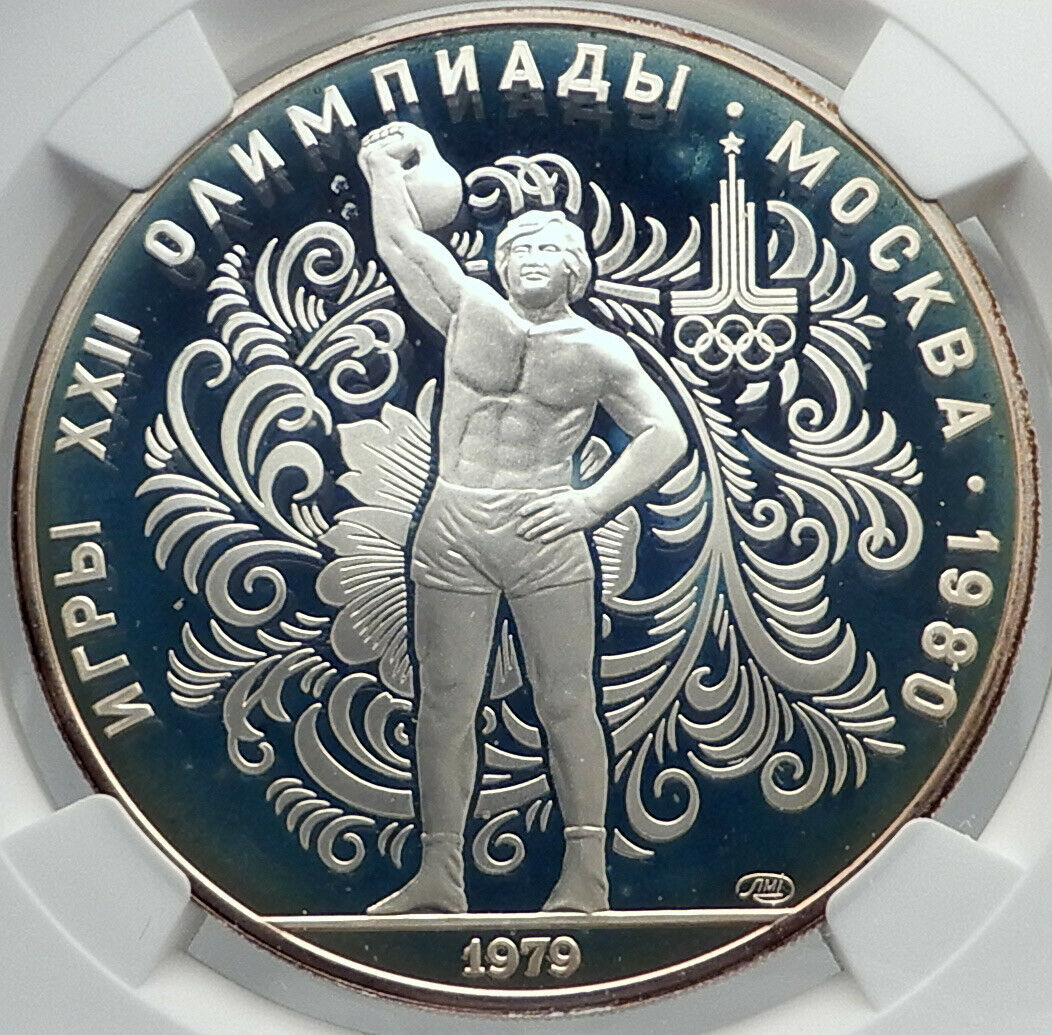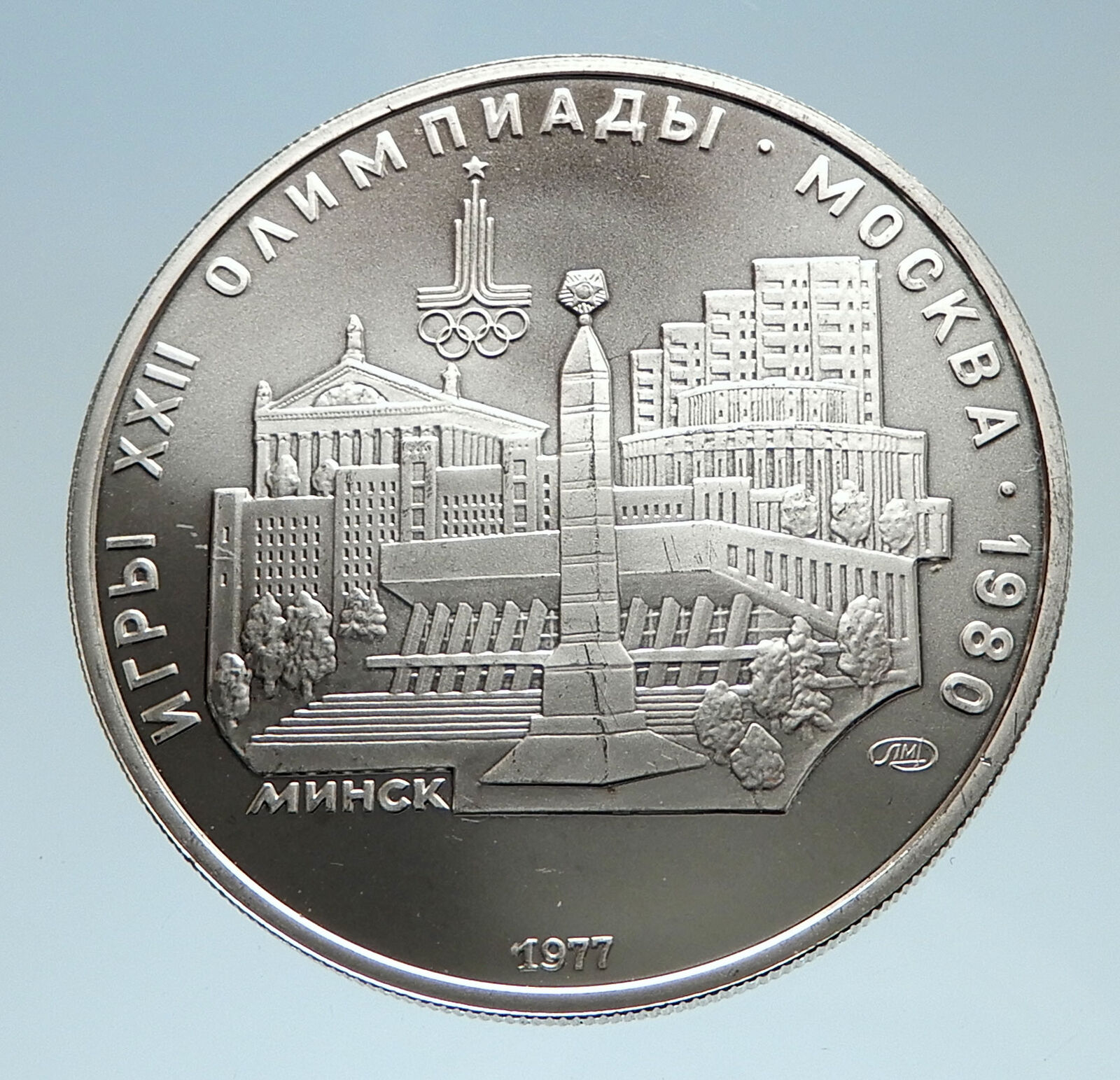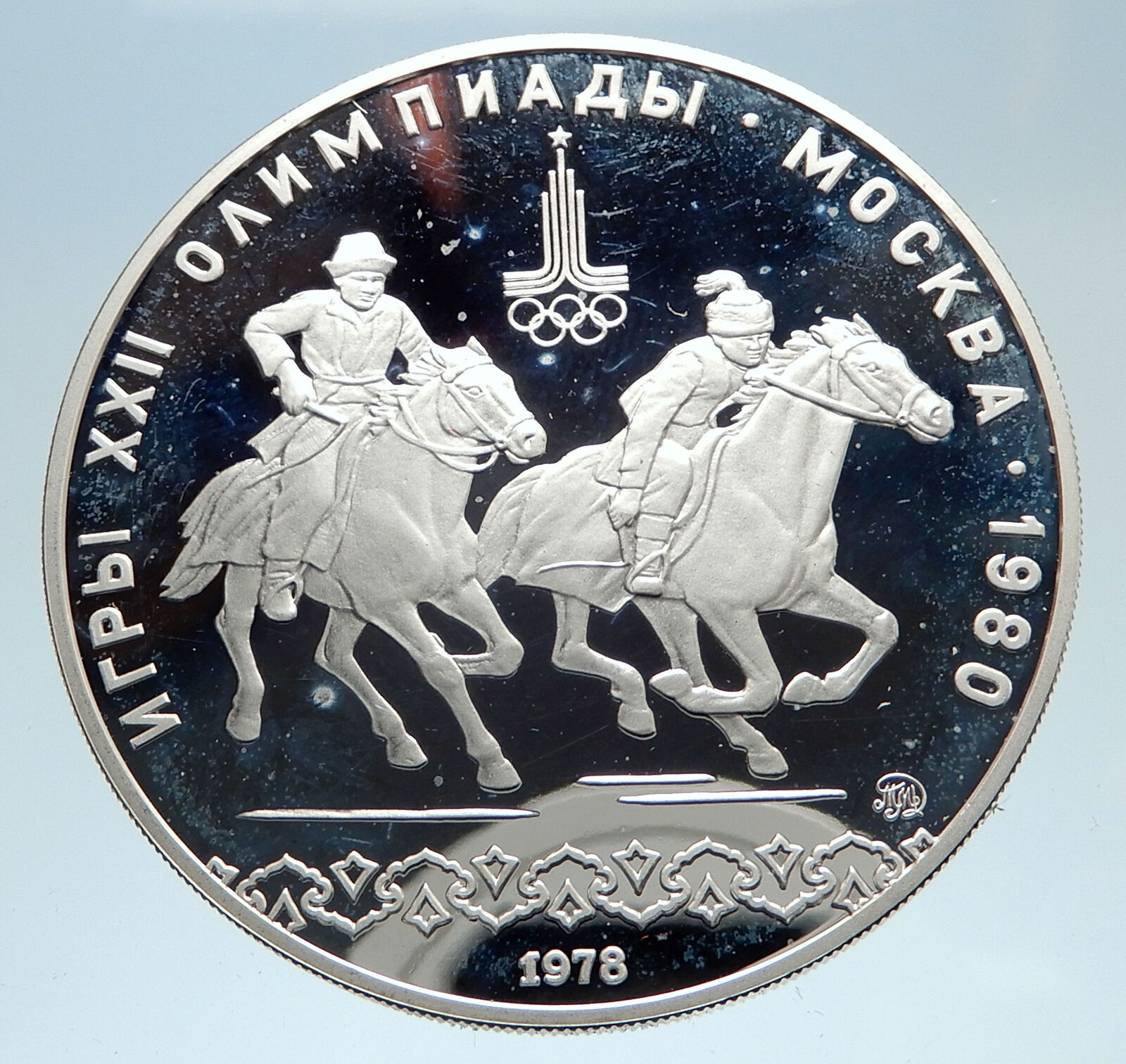|
Russia as USSR Russia – Union of Soviet Socialist Republics
The 300th Anniversary of the Russian Fleet
1996 Proof Silver 25 Roubles 60mm (173.29 grams) 0.900 Silver (5.0143 oz. ASW)
Reference: Y# 543
25 РУБЛЯ 1996 г. Ag 900 155.5 БАНК РОССИИ, Emblem of Russian bank: two-headed eagle.
300-ЛЕТИЕ РОССИЙСКОГО ФЛОТА Г.А. СПИРИДОВ ЧЕСМЕНСКОЕ СРАЖЕНИЕ ∙ 1770 г., Sailing-ships during the Battle of Cesme, to the left above them – a portrait of Admiral Grigory Spiridov.
Coin Notes:
During the Russian-Turkish war the Russian fleet, commanded by Admiral Spiridov, blocked the Turkish fleet in the Bay of Cesme of the coast of Asia Minor and destroyed it (June 26-July 7, 1770), giving Russia control over the Aegean Sea and the Dardanelles.
Date of issue: 18.10.1996 Catalogue number: 5115-0011
You are bidding on the exact item pictured, provided with a Certificate of Authenticity and Lifetime Guarantee of Authenticity.
 Grigory Andreyevich Spiridov (Russian: Григорий Андреевич Спиридов) (1713, Vyborg – April 19 [O.S. April 8] 1790, Moscow) was a leading Russian naval commander and admiral (1769). Grigory Andreyevich Spiridov (Russian: Григорий Андреевич Спиридов) (1713, Vyborg – April 19 [O.S. April 8] 1790, Moscow) was a leading Russian naval commander and admiral (1769).
Grigory Spiridov began his career in the Russian Navy in 1723. He was promoted to an officer rank in 1733. Spiridov had been commanding different ships of the Baltic Fleet since 1741. During the Seven Years’ War of 1756-1763, he was in charge of a landing party of two thousand men when Peter Rumyantsev was laying siege to the fortress of Kolberg in Pomerania. In 1762, Spiridov was promoted to the rank of rear admiral and assigned to command a squadron for securing the contact with the Russian army in Prussia. In 1764, he was appointed commander of the port of Tallinn and then Kronstadt (1766).
During the Russo-Turkish War of 1768-1774, Spiridov was in charge of a squadron, which would be sent from the Baltic Sea to the Mediterranean to assist the Greeks in their struggle against the Turks in the summer of 1769 (see Orlov Revolt and First Archipelago Expedition). In early 1770, he commanded the seizure of Mistra, Arcadia, and Navarino with the help of a landing party.
On July 5 [O.S. June 24] 1770, a Russian squadron under the nominal command of Count Alexey Grigoryevich Orlov with Spidirov in charge of the avant-garde attacked the Turkish fleet in the Chios Strait and forced it to hide in the Chesma Bay. On the night of June 26 (July 7), the Russian squadron under the actual command of Spiridov and Samuel Greig destroyed the Turkish fleet during the Battle of Chesma and established supremacy in the Aegean Sea. In 1771-1773, Spiridov commanded the Russian fleet in this region. When he resigned from the Russian Navy in 1774, many attributed it to his resentment that all the credit for his victories went to Orlov.
_-_Crimea_disputed.svg/220px-Russian_Federation_(orthographic_projection)_-_Crimea_disputed.svg.png) Russia (Russian: Росси́я, tr. Rossiya), also officially known as the Russian Federation (Russian: Российская Федерация, tr. Rossiyskaya Federatsiya), is a country in Eurasia. At 17,125,200 square kilometres (6,612,100 sq mi), Russia is the largest country in the world by surface area, covering more than one-eighth of the Earth’s inhabited land area, and the ninth most populous, with over 144 million people at the end of March 2016. The European western part of the country is much more populated and urbanised than the eastern; about 77% of the population live in European Russia. Russia’s capital Moscow is one of the largest cities in the world; other major urban centers include Saint Petersburg, Novosibirsk, Yekaterinburg, Chelyabinsk, Nizhny Novgorod, Ufa and Kazan. Russia (Russian: Росси́я, tr. Rossiya), also officially known as the Russian Federation (Russian: Российская Федерация, tr. Rossiyskaya Federatsiya), is a country in Eurasia. At 17,125,200 square kilometres (6,612,100 sq mi), Russia is the largest country in the world by surface area, covering more than one-eighth of the Earth’s inhabited land area, and the ninth most populous, with over 144 million people at the end of March 2016. The European western part of the country is much more populated and urbanised than the eastern; about 77% of the population live in European Russia. Russia’s capital Moscow is one of the largest cities in the world; other major urban centers include Saint Petersburg, Novosibirsk, Yekaterinburg, Chelyabinsk, Nizhny Novgorod, Ufa and Kazan.
Extending across the entirety of Northern Asia and much of Eastern Europe, Russia spans eleven time zones and incorporates a wide range of environments and landforms. From northwest to southeast, Russia shares land borders with Norway, Finland, Estonia, Latvia, Lithuania and Poland (both with Kaliningrad Oblast), Belarus, Ukraine, Georgia, Azerbaijan, Kazakhstan, China, Mongolia and North Korea. It shares maritime borders with Japan by the Sea of Okhotsk and the U.S. state of Alaska across the Bering Strait.
The East Slavs emerged as a recognizable group in Europe between the 3rd and 8th centuries AD. Founded and ruled by a Varangian warrior elite and their descendants, the medieval state of Rus arose in the 9th century. In 988 it adopted Orthodox Christianity from the Byzantine Empire, beginning the synthesis of Byzantine and Slavic cultures that defined Russian culture for the next millennium. Rus’ ultimately disintegrated into a number of smaller states; most of the Rus’ lands were overrun by the Mongol invasion and became tributaries of the nomadic Golden Horde in the 13th century. The Grand Duchy of Moscow gradually reunified the surrounding Russian principalities, achieved independence from the Golden Horde, and came to dominate the cultural and political legacy of Kievan Rus’. By the 18th century, the nation had greatly expanded through conquest, annexation, and exploration to become the Russian Empire, which was the third largest empire in history, stretching from Poland on the west to Alaska on the east.
Following the Russian Revolution, the Russian Soviet Federative Socialist Republic became the largest and leading constituent of the Union of Soviet Socialist Republics, the world’s first constitutionally socialist state. The Soviet Union played a decisive role in the Allied victory in World War II, and emerged as a recognized superpower and rival to the United States during the Cold War. The Soviet era saw some of the most significant technological achievements of the 20th century, including the world’s first human-made satellite and the launching of the first humans in space. By the end of 1990, the Soviet Union had the world’s second largest economy, largest standing military in the world and the largest stockpile of weapons of mass destruction. Following the dissolution of the Soviet Union in 1991, twelve independent republics emerged from the USSR: Russia, Ukraine, Belarus, Kazakhstan, Uzbekistan, Armenia, Azerbaijan, Georgia, Kyrgyzstan, Moldova, Tajikistan, Turkmenistan and the Baltic states regained independence: Estonia, Latvia, Lithuania; the Russian SFSR reconstituted itself as the Russian Federation and is recognized as the continuing legal personality and sole successor state of the Soviet Union. It is governed as a federal semi-presidential republic.
The Russian economy ranks as the twelfth largest by nominal GDP and sixth largest by purchasing power parity in 2015. Russia’s extensive mineral and energy resources are the largest such reserves in the world, making it one of the leading producers of oil and natural gas globally. The country is one of the five recognized nuclear weapons states and possesses the largest stockpile of weapons of mass destruction. Russia is a great power as well as a regional power and has been characterised as a potential superpower. It is permanent member of the United Nations Security Council, as well as a member of the G20, the Council of Europe, the Asia-Pacific Economic Cooperation (APEC), the Shanghai Cooperation Organisation (SCO), the Organization for Security and Co-operation in Europe (OSCE), and the World Trade Organization (WTO), as well as being the leading member of the Commonwealth of Independent States (CIS), the Collective Security Treaty Organization (CSTO) and one of the five members of the Eurasian Economic Union (EEU), along with Armenia, Belarus, Kazakhstan and Kyrgyzstan.
|





 Grigory Andreyevich Spiridov (Russian: Григорий Андреевич Спиридов) (1713, Vyborg – April 19 [O.S. April 8] 1790, Moscow) was a leading Russian naval commander and admiral (1769).
Grigory Andreyevich Spiridov (Russian: Григорий Андреевич Спиридов) (1713, Vyborg – April 19 [O.S. April 8] 1790, Moscow) was a leading Russian naval commander and admiral (1769). _-_Crimea_disputed.svg/220px-Russian_Federation_(orthographic_projection)_-_Crimea_disputed.svg.png) Russia (Russian: Росси́я, tr. Rossiya), also officially known as the Russian Federation (Russian: Российская Федерация, tr. Rossiyskaya Federatsiya), is a country in Eurasia. At 17,125,200 square kilometres (6,612,100 sq mi), Russia is the largest country in the world by surface area, covering more than one-eighth of the Earth’s inhabited land area, and the ninth most populous, with over 144 million people at the end of March 2016. The European western part of the country is much more populated and urbanised than the eastern; about 77% of the population live in European Russia. Russia’s capital Moscow is one of the largest cities in the world; other major urban centers include Saint Petersburg, Novosibirsk, Yekaterinburg, Chelyabinsk, Nizhny Novgorod, Ufa and Kazan.
Russia (Russian: Росси́я, tr. Rossiya), also officially known as the Russian Federation (Russian: Российская Федерация, tr. Rossiyskaya Federatsiya), is a country in Eurasia. At 17,125,200 square kilometres (6,612,100 sq mi), Russia is the largest country in the world by surface area, covering more than one-eighth of the Earth’s inhabited land area, and the ninth most populous, with over 144 million people at the end of March 2016. The European western part of the country is much more populated and urbanised than the eastern; about 77% of the population live in European Russia. Russia’s capital Moscow is one of the largest cities in the world; other major urban centers include Saint Petersburg, Novosibirsk, Yekaterinburg, Chelyabinsk, Nizhny Novgorod, Ufa and Kazan.




